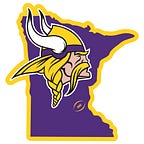What is fascism? A paper series beginning.
Very often when we think of fascism, we think of Nazi Germany and the one-party dictators roaming through the streets and shouting “heil Hitler!” This is pretty much correct and there have been many dictators throughout history which have done so. Hitler, Mussolini, Franco, are all examples of past dictators and must be remembered so that we don’t repeat the same mistakes again. Unfortunately, people are beginning to again and in ways that even scholars on fascism are repeating also.
You would not think this, but fascism used to be a popular idea in America. The Silver Legion and German American Bund were two prominent far-right organizations that advocated for Christian fascism and American-style Nazism respectively. They were popular amongst German American and Italian American communities. In 1932, there was the Business Plot which was a plot to overthrow FDR and install an Italian-style fascism America which was thwarted by the very general they tried to recruit, Smedley Butler. When America went to war with fascism in Europe, their leaders were arrested, and they were forced to break up. The biggest assumption is that fascism died out along with these leaders when in fact, they were wrong. Fascism didn’t die in America, or even throughout the world. Instead, they went quiet. Those people never gave up their beliefs. They moved behind the scenes fighting communism and plotting their next rise to power, which is clearly now.
According to historian Ian Kershaw, “trying to define ‘fascism’ is like trying to nail jelly to a wall.” [2] This is in reference to the fact that fascism was meant to be fluid and largely made up as they went along. If you look at many fascist regimes of the past and today, they will say one thing during their campaigns for power, and then do something totally different when they achieve it. Hitler for example, campaigned as a socialist but it was never his real intention to implement it. He knew that to win power, he would have to use socialistic rhetoric to win. In the modern day, Donald Trump would have to use Christian and populistic rhetoric to win, but I think it’s become clear that he has no intention of acting on either.
There will be many themes I will explore over the presence of the series. Lost Golden age syndrome, humiliation, nationalism, unity, hierarchy, anti-intellectualism, modernism, economics, and a few more depending on if I feel satisfied. Attempts at defining fascism usually arrive at a more set of principles rather than a straightforward definition. I will talk about fascism back then, and fascism now because there are notable differences between the two. One of which is that the past was a lot more overt, fascism today is quiet and covert. The mask is, however, beginning to slip as many fascists can’t help themselves.
I will post updates on this essay when I finish each one.
Fascism series:
Fascism: lost golden age.
Fascism: unity and energy.
Thanks for reading! If you enjoy what I do, don’t forget to clap, follow, and share so that everyone can read my message. My email is derekhudley@gmail.com if you wish to contact me.
Sources:
[1] How to Spot a Strongman, According to a Historian of Fascism | TIME
[2] To Hell and Back: Europe, 1914–1949 by Ian Kershaw (2016) Viking. ISBN 0143109928.
